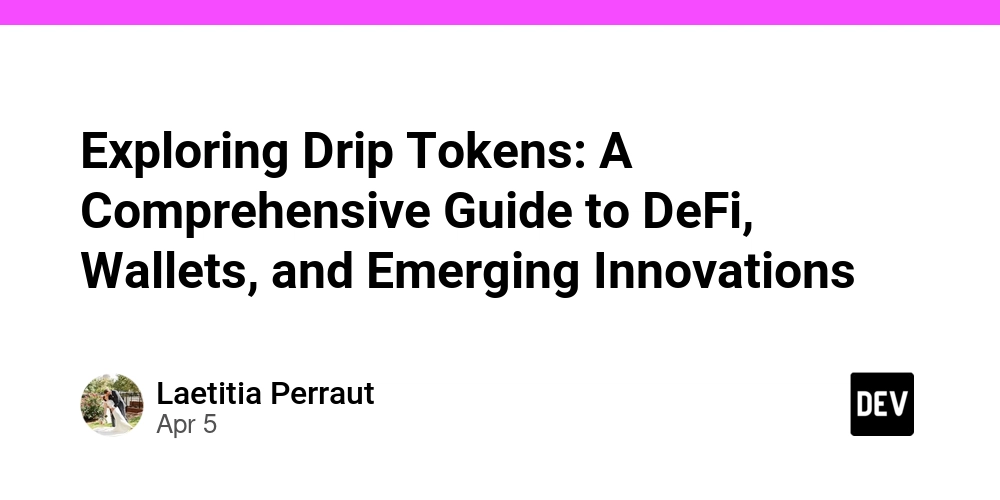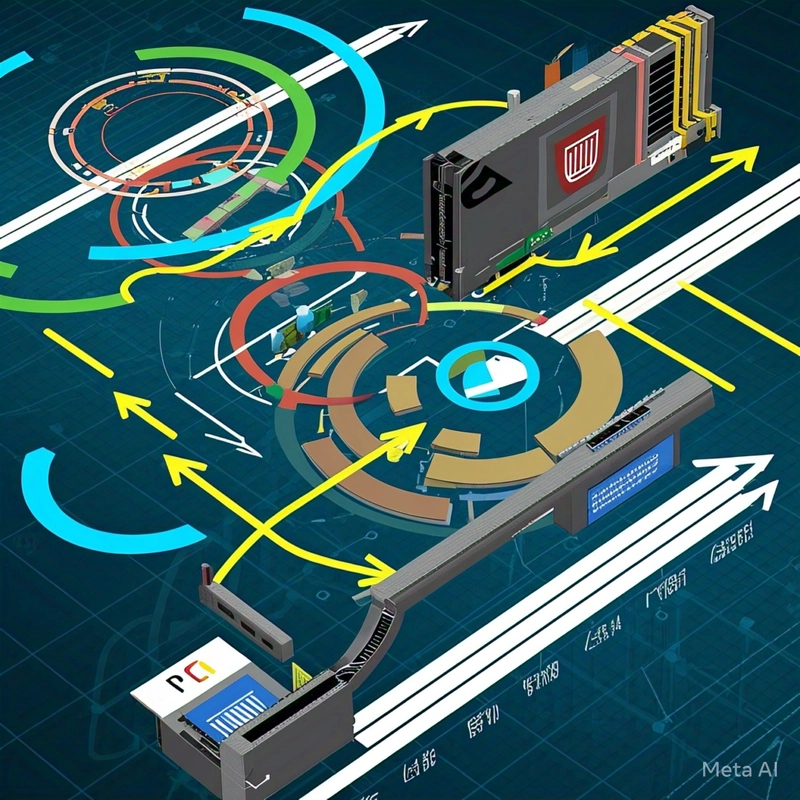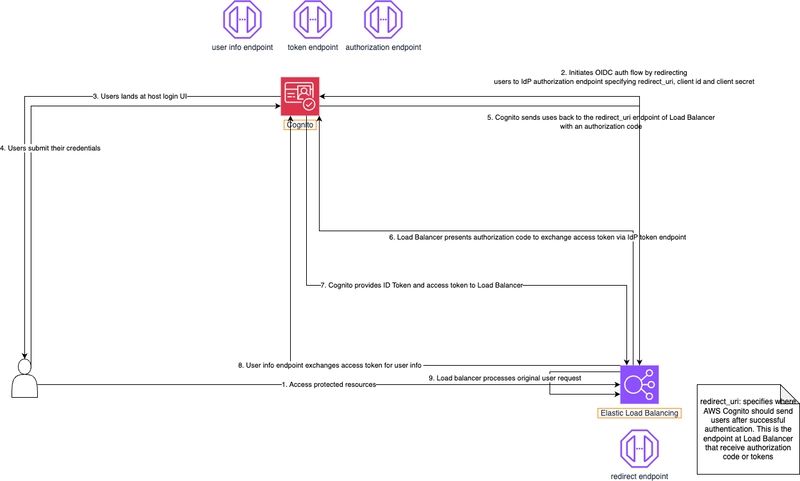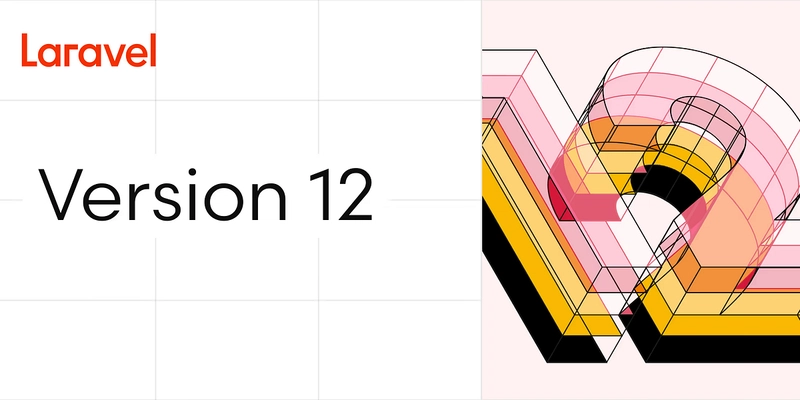Exploring Drip Tokens: A Comprehensive Guide to DeFi, Wallets, and Emerging Innovations
Abstract: This post explains the world of Drip tokens in decentralized finance (DeFi). We explore their background, key features, common applications, and related tools such as secure digital wallets and decentralized exchanges. We also compare Drip tokens to other DeFi projects, outline challenges that users might face, and discuss future trends. In this article, we include resources and examples including authoritative links like CoinGecko, MetaMask, and additional insights shared on Dev.to. Whether you are a beginner or a seasoned blockchain enthusiast, this guide helps you navigate the complex but exciting world of Drip tokens. Introduction Decentralized finance has transformed how financial operations work, and Drip tokens are a notable part of that change. In essence, drip tokens serve as a mechanism for earning rewards, participating in yield strategies, and sometimes fueling peer-to-peer exchanges. With rising interest in blockchain technology, knowing how to manage and trade these tokens becomes essential. This guide is written from a technical yet accessible perspective—helping you understand the ecosystem while keeping the language simple and clear. In this post, we refer to the original article Learn More About Drip Tokens and build on it by discussing the background and context of drip tokens, their core concepts, practical applications, challenges, and future innovations. Background and Context What Are Drip Tokens? Drip tokens are a type of digital asset within the decentralized finance space. They are often used in protocols such as Drip Network where regular rewards are distributed to holders. Their mechanism is designed to allow users to earn additional tokens via staking or active participation in network governance. Similar to other utility tokens, drip tokens can serve multiple roles including liquidity incentives and decentralized referrals. Historical Perspective and Ecosystem Blockchain technology has rapidly evolved over the past decade. Innovations in smart contracts and decentralized exchanges have enabled new tokens to emerge and disrupt traditional finance. Drip tokens emerged as part of the second wave of DeFi projects that focus on sustainable yield and community engagement. High-profile resources such as CoinGecko offer real-time pricing and trends for these assets. Key elements contributing to the rise of drip tokens include: Decentralization: Removal of centralized intermediaries enhances trust. Staking Rewards: Earn yield simply by holding or staking tokens. Community Focus: Many projects thrive on referral programs and community support. Blockchain roots and open-source technology have also fueled the ecosystem. The advent of wallet solutions such as MetaMask and Trust Wallet assist users in securely managing their tokens. Moreover, decentralized exchanges like Uniswap and PancakeSwap allow trading of a diverse range of tokens without intermediaries. Ecosystem Context and Related Tools A variety of digital wallets have emerged to help manage crypto assets. Consider the following options: MetaMask: A popular browser extension wallet popular with Ethereum users. Trust Wallet: A mobile-focused solution that supports many token standards. Ledger: A hardware wallet that provides offline security features. To learn about NFT-specific wallets, refer to What is an NFT Wallet. A snapshot table below shows some aspects of these wallet types: Wallet Type Key Features Benefits MetaMask Browser extension, integrates with dApps User friendly, widely supported Trust Wallet Mobile-first design, multi-chain support Easy access on the go, secure Ledger Hardware-based, offline storage High security, resistant to hacks Core Concepts and Features Drip tokens come with a set of core concepts that combine technical depth with practical utility. Technical Mechanisms Staking and Rewards: Drip tokens are often implemented in yield protocols that distribute rewards regularly. The concept of “dripping” rewards means users earn additional tokens over time simply by holding or staking. Referral Systems: Many projects use referral incentives to encourage community growth. As users refer others, they might receive bonus drip tokens. Smart Contract Automation: Automated protocols, powered by smart contracts, ensure fair and transparent distribution of rewards without human intervention. Integration with Decentralized Exchanges Drip tokens are often traded on decentralized platforms. For instance: Uniswap: Offers peer-to-peer trading and liquidity pools. PancakeSwap/SushiSwap: Provide alternatives with different fee structures and token pairings. Trading on these platforms is efficient and keeps fees low due to the automated market maker (AMM) design. For an in-depth look at token trading, check out resources such as Drip Network vs Other DeFi Projec

Abstract:
This post explains the world of Drip tokens in decentralized finance (DeFi). We explore their background, key features, common applications, and related tools such as secure digital wallets and decentralized exchanges. We also compare Drip tokens to other DeFi projects, outline challenges that users might face, and discuss future trends. In this article, we include resources and examples including authoritative links like CoinGecko, MetaMask, and additional insights shared on Dev.to. Whether you are a beginner or a seasoned blockchain enthusiast, this guide helps you navigate the complex but exciting world of Drip tokens.
Introduction
Decentralized finance has transformed how financial operations work, and Drip tokens are a notable part of that change. In essence, drip tokens serve as a mechanism for earning rewards, participating in yield strategies, and sometimes fueling peer-to-peer exchanges. With rising interest in blockchain technology, knowing how to manage and trade these tokens becomes essential. This guide is written from a technical yet accessible perspective—helping you understand the ecosystem while keeping the language simple and clear.
In this post, we refer to the original article Learn More About Drip Tokens and build on it by discussing the background and context of drip tokens, their core concepts, practical applications, challenges, and future innovations.
Background and Context
What Are Drip Tokens?
Drip tokens are a type of digital asset within the decentralized finance space. They are often used in protocols such as Drip Network where regular rewards are distributed to holders. Their mechanism is designed to allow users to earn additional tokens via staking or active participation in network governance. Similar to other utility tokens, drip tokens can serve multiple roles including liquidity incentives and decentralized referrals.
Historical Perspective and Ecosystem
Blockchain technology has rapidly evolved over the past decade. Innovations in smart contracts and decentralized exchanges have enabled new tokens to emerge and disrupt traditional finance. Drip tokens emerged as part of the second wave of DeFi projects that focus on sustainable yield and community engagement. High-profile resources such as CoinGecko offer real-time pricing and trends for these assets.
Key elements contributing to the rise of drip tokens include:
- Decentralization: Removal of centralized intermediaries enhances trust.
- Staking Rewards: Earn yield simply by holding or staking tokens.
- Community Focus: Many projects thrive on referral programs and community support.
Blockchain roots and open-source technology have also fueled the ecosystem. The advent of wallet solutions such as MetaMask and Trust Wallet assist users in securely managing their tokens. Moreover, decentralized exchanges like Uniswap and PancakeSwap allow trading of a diverse range of tokens without intermediaries.
Ecosystem Context and Related Tools
A variety of digital wallets have emerged to help manage crypto assets. Consider the following options:
- MetaMask: A popular browser extension wallet popular with Ethereum users.
- Trust Wallet: A mobile-focused solution that supports many token standards.
- Ledger: A hardware wallet that provides offline security features.
To learn about NFT-specific wallets, refer to What is an NFT Wallet.
A snapshot table below shows some aspects of these wallet types:
| Wallet Type | Key Features | Benefits |
|---|---|---|
| MetaMask | Browser extension, integrates with dApps | User friendly, widely supported |
| Trust Wallet | Mobile-first design, multi-chain support | Easy access on the go, secure |
| Ledger | Hardware-based, offline storage | High security, resistant to hacks |
Core Concepts and Features
Drip tokens come with a set of core concepts that combine technical depth with practical utility.
Technical Mechanisms
- Staking and Rewards: Drip tokens are often implemented in yield protocols that distribute rewards regularly. The concept of “dripping” rewards means users earn additional tokens over time simply by holding or staking.
- Referral Systems: Many projects use referral incentives to encourage community growth. As users refer others, they might receive bonus drip tokens.
- Smart Contract Automation: Automated protocols, powered by smart contracts, ensure fair and transparent distribution of rewards without human intervention.
Integration with Decentralized Exchanges
Drip tokens are often traded on decentralized platforms. For instance:
- Uniswap: Offers peer-to-peer trading and liquidity pools.
- PancakeSwap/SushiSwap: Provide alternatives with different fee structures and token pairings.
Trading on these platforms is efficient and keeps fees low due to the automated market maker (AMM) design. For an in-depth look at token trading, check out resources such as Drip Network vs Other DeFi Projects.
Ecosystem Overlaps
Drip tokens reside in a diverse ecosystem where they interact with both centralized and decentralized financial tools.
- Centralized Exchanges: Platforms like Binance and Coinbase may list drip tokens, ensuring high liquidity and a familiar user interface.
- Tax Compliance and Regulation: As cryptocurrencies become mainstream, understanding taxation is crucial. Refer to guidelines on Tax Implications for further information.
Bullet List of Key Features
- Yield Generation: Earn rewards automatically through smart contracts.
- Automated Distribution: Smart contracts manage timing and distribution seamlessly.
- Security Integration: Leveraged by robust wallet solutions for secure storage.
- Decentralized Trading: Integrated with protocols like Uniswap for peer-to-peer trading.
- Community Incentives: Referral and reward systems that promote network growth.
These features ensure drip tokens are both resilient and attractive to a growing crypto community.
Applications and Use Cases
Understanding practical applications is crucial. Below are three common use cases that illustrate how drip tokens can be applied practically in the DeFi landscape.
Use Case 1: Passive Yield Farming
Passive yield farming is one of the most appealing use cases for drip tokens. By staking your drip tokens in a decentralized protocol, you:
- Earn Additional Tokens: Over time, the network rewards you.
- Reduce Complexity: Automated smart contracts manage staking processes.
- Improve Asset Efficiency: Instead of idly holding tokens, you convert your holdings into profit.
For users new to yield farming, a step-by-step guide can be found in articles like A Comprehensive Guide on How to Buy Drip Tokens.
Use Case 2: Decentralized Payments and Transfers
In decentralized ecosystems, drip tokens serve as a medium of exchange within peer-to-peer networks:
- Low Transaction Fees: Thanks to the use of smart contracts on networks like Ethereum.
- Transparency: Every transaction is visible on public blockchains.
- Global Accessibility: Open to anyone with internet access, bypassing traditional banking restrictions.
This decentralized payment use case illustrates the broader impact of DeFi on global financial inclusivity.
Use Case 3: Incentivizing Open Source Development
Blockchain projects have begun exploring innovative models that reward open source contributions. Drip tokens can be an effective tool in:
- Funding Open Source Projects: As seen in initiatives that provide small rewards to open source developers.
- Encouraging Code Quality: With automated rewards based on contributions.
- Building a Collaborative Ecosystem: Where both developers and users benefit from shared successes.
For more insights on bridging open source and blockchain financing, see The Role of NFTs in Open Source Rewards.
Challenges and Limitations
Despite the innovations and benefits, drip tokens and related DeFi practices encounter several challenges.
Technical Challenges
- Smart Contract Vulnerabilities: As with all blockchain applications, bugs or security flaws may lead to exploitation.
- Network Congestion: High transaction volumes on networks like Ethereum may increase fees temporarily.
- Scalability Issues: Not all protocols are designed to handle rapid growth, leading to slower processing times.
Adoption and Regulatory Issues
- User Education: Many users are still unfamiliar with technical details, which may lead to mismanagement of assets.
- Tax and Compliance: The ambiguous regulatory environment means that users must continuously monitor their local regulations. The IRS provides guidelines on virtual currencies in Tax Implications.
- Interoperability: Integrating drip tokens across different blockchains and wallets can be complex.
Risks in the Ecosystem
- Volatility: As with any crypto asset, drip tokens face significant market volatility.
- Liquidity Concerns: In decentralized systems, thin liquidity may lead to poor execution of large orders.
- Centralization Risks: While the protocol is decentralized, certain dependencies (like centralized exchanges listing the token) may add risk.
Future Outlook and Innovations
Looking ahead, the ecosystem surrounding drip tokens is likely to evolve alongside advances in blockchain and DeFi.
Technological Innovations
- Layer-2 Solutions: Adoption of protocols such as Arbitrum can alleviate network congestion and reduce fees. Articles like Arbitrum Liquidity: Navigating the Layer 2 Landscape in DeFi discuss these advancements in detail.
- Interoperability and Cross-Chain Bridges: Integrations that allow drip tokens to move seamlessly between blockchains will boost their utility and liquidity.
- Enhanced Security Measures: With improved smart contract audits and better wallet technologies, vulnerabilities will continue to diminish.
Market Trends and Adoption
- Continued Expansion of DeFi: As more users explore yield farming and other DeFi applications, the demand for drip tokens is likely to rise.
- Innovative Funding Models: New approaches in project funding—combining blockchain with open source principles—will foster community projects where drip tokens play a critical role.
- Collaborations with Traditional Finance: Several centralized exchanges are already planning to list DeFi tokens, thus bridging traditional finance with the decentralized ecosystem.
Emerging Developments
The next few years promise exciting changes:
- Rise of NFT-Based Rewards: Combining NFT technology with drip token rewards will provide novel ways of incentivizing developers and content creators.
- Regulatory Clarity: As governments begin to embrace crypto regulation, clearer guidelines will help legitimize and secure the ecosystem.
- Decentralized Autonomous Organizations (DAOs): DAOs may play a more central role in managing protocols that distribute drip tokens, giving users greater voting power and influence.
For additional futuristic insights, check out Arbitrum and Token Swaps: Revolutionizing Decentralized Finance and Transforming Project Funding with Decentralized Finance.
Structured Data Recap
Below is a summary table that recaps the core features and challenges discussed in this post:
| Aspect | Details |
|---|---|
| Core Mechanism | Yield distribution through staking and referrals |
| Integration | Works with wallets (MetaMask, Trust Wallet, Ledger) and DEXs (Uniswap) |
| Technical Risks | Smart contract vulnerabilities, scalability, network congestion |
| Regulatory Risks | Tax implications, compliance issues, evolving jurisdictional standards |
| Future Trends | Layer-2 scaling, cross-chain interoperability, NFT integration |
Additionally, here is a quick bullet summary of the key insights:
- Drip tokens enable passive income streams.
- Decentralization removes intermediaries, enhancing transparency.
- Security is bolstered by using trusted wallets and audited smart contracts.
- Innovations such as Layer-2 solutions promise improved performance.
- Regulatory clarity is vital for mainstream adoption.
Summary
Drip tokens embody the innovation at the heart of decentralized finance. They serve as a vehicle for passive income, community incentives, and even as a bridge between traditional and decentralized trading platforms. By integrating with secure wallet solutions like MetaMask and decentralized exchanges such as Uniswap, the drip tokens ecosystem demonstrates both technical sophistication and user-friendly design.
We explored the background of drip tokens, explaining how they operate through smart contracts and referral systems. We detailed practical use cases—from passive yield farming and decentralized payments to incentivizing open source project development—and examined challenges related to technical vulnerabilities, scalability, and regulatory compliance. Delving into the future, we discussed how upcoming innovations like Layer-2 solutions, cross-chain interoperability, and NFT integration may shape the next phase of the DeFi revolution.
In addition, various authoritative resources like CoinGecko help users track market trends while expert viewpoints from the Dev.to community, including guides such as A Comprehensive Guide on How to Buy Drip Tokens and Arbitrum and Token Swaps: Revolutionizing Decentralized Finance, provide deeper insights into this rapidly-evolving landscape.
As the world gravitates further toward decentralized systems, understanding and managing drip tokens will be critical for both new entrants and seasoned investors. The blend of technological innovation and community reward systems ensures that drip tokens—and the broader DeFi space—remain central to the future of finance.
Remember, while this guide provides an overview, always perform your own research and consult financial professionals for personalized advice. The rapid pace of change in blockchain technology means that staying informed is key to effectively leveraging these tools in your financial journey.
Embrace the power of decentralized finance, and let drip tokens be your gateway to earning, trading, and participating in the future of digital economies.












































































































































































![[The AI Show Episode 142]: ChatGPT’s New Image Generator, Studio Ghibli Craze and Backlash, Gemini 2.5, OpenAI Academy, 4o Updates, Vibe Marketing & xAI Acquires X](https://www.marketingaiinstitute.com/hubfs/ep%20142%20cover.png)



























































































































![[DEALS] The Premium Learn to Code Certification Bundle (97% off) & Other Deals Up To 98% Off – Offers End Soon!](https://www.javacodegeeks.com/wp-content/uploads/2012/12/jcg-logo.jpg)


![From drop-out to software architect with Jason Lengstorf [Podcast #167]](https://cdn.hashnode.com/res/hashnode/image/upload/v1743796461357/f3d19cd7-e6f5-4d7c-8bfc-eb974bc8da68.png?#)








































































































.png?#)


































_Christophe_Coat_Alamy.jpg?#)


.webp?#)
 (1).webp?#)



































































































![Apple Considers Delaying Smart Home Hub Until 2026 [Gurman]](https://www.iclarified.com/images/news/96946/96946/96946-640.jpg)
![iPhone 17 Pro Won't Feature Two-Toned Back [Gurman]](https://www.iclarified.com/images/news/96944/96944/96944-640.jpg)
![Tariffs Threaten Apple's $999 iPhone Price Point in the U.S. [Gurman]](https://www.iclarified.com/images/news/96943/96943/96943-640.jpg)





































































































































